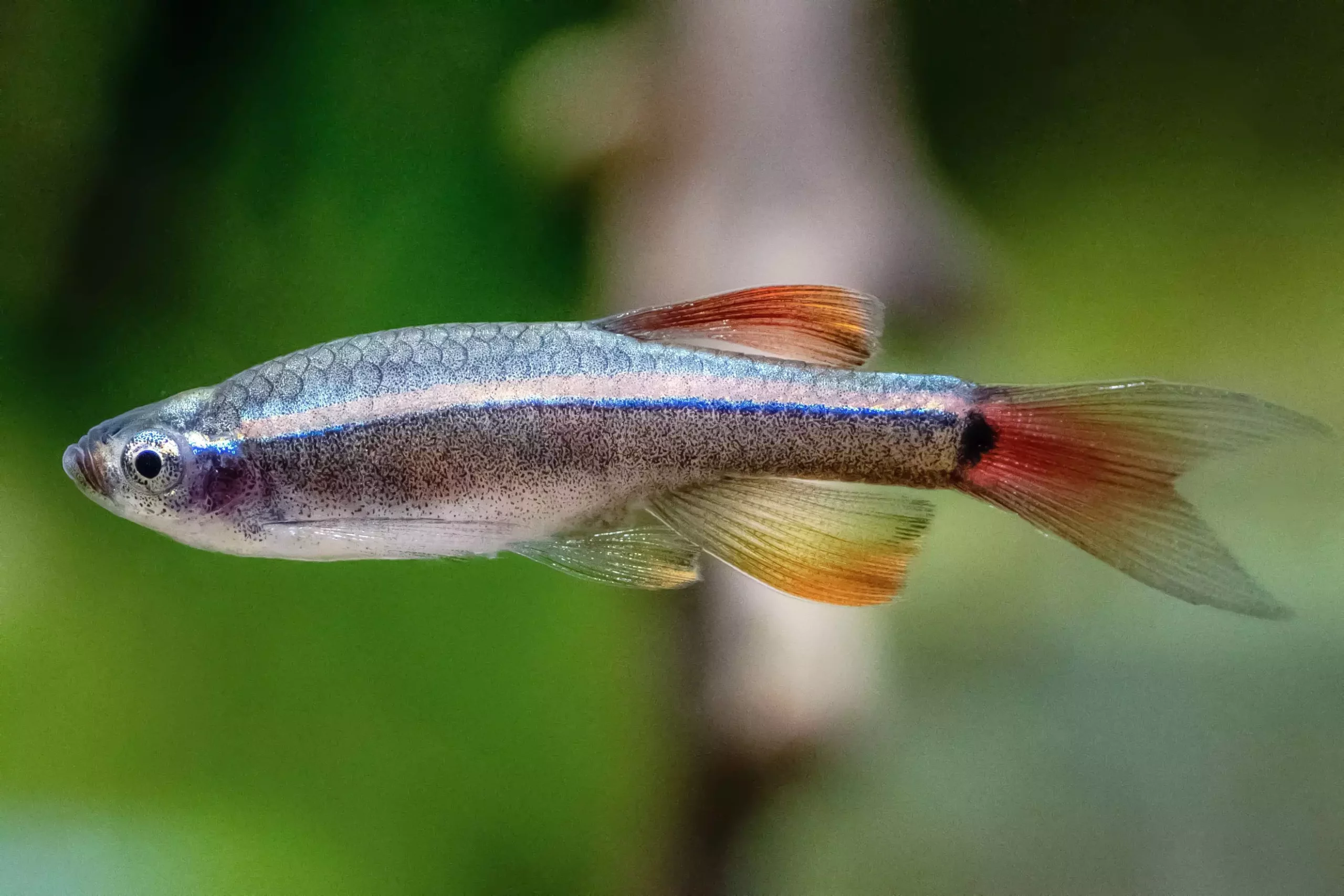The White Cloud Mountain Minnow, scientifically known as *Tanichthys albonubes*, is a captivating species of freshwater fish that is beloved among aquarium hobbyists. Often referred to as “the working man’s neon,” these small, vibrant fish exude charm without carrying a hefty price tag like their more illustrious cousins, the neon tetras. This article delves into the intriguing characteristics, habitat, care, and conservation efforts surrounding the White Cloud Mountain Minnow, reshaping our understanding of this unique species.
Originally, the *Tanichthys albonubes* was the sole recognized species within its genus, flourishing in the cooler waters of China and Vietnam. However, in 2001, research uncovered two additional species native to Vietnam: *Tanichthys micagemmae* and *Tanichthys thacbaensis*. Of the three, only the Vietnamese white cloud (*Tanichthys micagemmae*) made its way into the aquarium trade, showcasing the ongoing necessity for the conservation of this fish.
The plight of the White Cloud Mountain Minnow took a troubling turn in the 1980s, when it was reportedly extinct in its natural habitat. Fortunately, there have been recent discoveries of small populations in remote locations across Guangdong and Hainan provinces in China and Quảng Ninh province in Vietnam. Notably, the species is classified as endangered in China, prompting both awareness and conservation efforts to sustain its existence in the wild.
Physical Characteristics and Behavior
Measuring approximately 1.5 inches (4 cm) at adulthood, the White Cloud Mountain Minnow presents a delicate yet striking appearance. Males are typically more slender and exhibit a broader array of colors, displaying shimmering bronze-brown bodies decorated with fluorescent lines that create a stunning visual effect. These lines culminate in a vibrant red spot near the tail, while their fins are beautifully colored with red and white edges, making them an aesthetically appealing choice for any aquarium.
Their nature is generally peaceful; they thrive in schools of at least six individuals, establishing a harmonious environment when kept together. When isolated, they tend to lose their vibrant coloring and exhibit shyer behavior. Despite being sold as companions for goldfish, it is wise to reconsider this pairing; larger fish often prey on them, making a mixed-species tank potentially dangerous.
Providing the appropriate environment and care for White Cloud Mountain Minnows is essential for their well-being. Although they are hardy fish suitable for beginners, maintaining the right water temperature is crucial. These minnows cannot thrive in water temperatures above 72°F (22°C), which can drastically reduce their lifespan. They prefer a darker substrate, ample vegetation, and driftwood to mimic their natural habitat while accommodating their active swimming behavior.
Water conditions are relatively forgiving, although maintaining a stable pH and hardness is advisable. It is important to eliminate any copper-based medications, as these fish are highly sensitive to copper toxicity. Utilizing subdued lighting can also amplify their colors, further enhancing the aquarium’s visual appeal.
The dietary habits of White Cloud Mountain Minnows are diverse. In their natural habitat, they are known insectivores, particularly fond of larvae from mosquitoes, daphnia, and brine shrimp. Therefore, providing a well-rounded diet that includes live, frozen, and high-quality flake foods is vital to keep them healthy and vibrant. To stimulate their health and reproductive readiness, incorporating live foods into their diet is advantageous, especially leading up to breeding.
Breeding White Cloud Mountain Minnows
Breeding White Cloud Mountain Minnows can be an exhilarating endeavor for aquarium enthusiasts. They are excellent for novice breeders, as they are egg scatterers, allowing straightforward breeding practices. Couples may be established in a separate breeding tank where they can safely deposit their eggs among plants or spawning mops. As fry emerge, parents should be removed to protect the fragile young from predation.
To ensure successful breeding, conditions must be paralleled to their natural environment; a soft water pH of 6.5 to 7.5 and a temperature range of 68°F to 72°F (20°C to 22°C) are critical. Alternatively, if ample natural hiding spaces exist in the original tank, a larger school could be cultivated without needing a separate breeding setup.
Conservation and the Future
Ultimately, the status of the White Cloud Mountain Minnow underscores broader environmental concerns. Its endangered classification highlights the imperative for sustainable practices in aquaculture and the importance of habitat conservation efforts in their native regions. Awareness and responsible care can ensure these delightful fish continue to captivate future generations, both in aquariums and their natural habitat.
With their exquisite beauty, relatively easy care requirements, and delightful behavior, the White Cloud Mountain Minnow stands as a prime example of how passionate aquarium hobbyists can broaden their appreciation for freshwater species while participating in fundamental conservation efforts.

